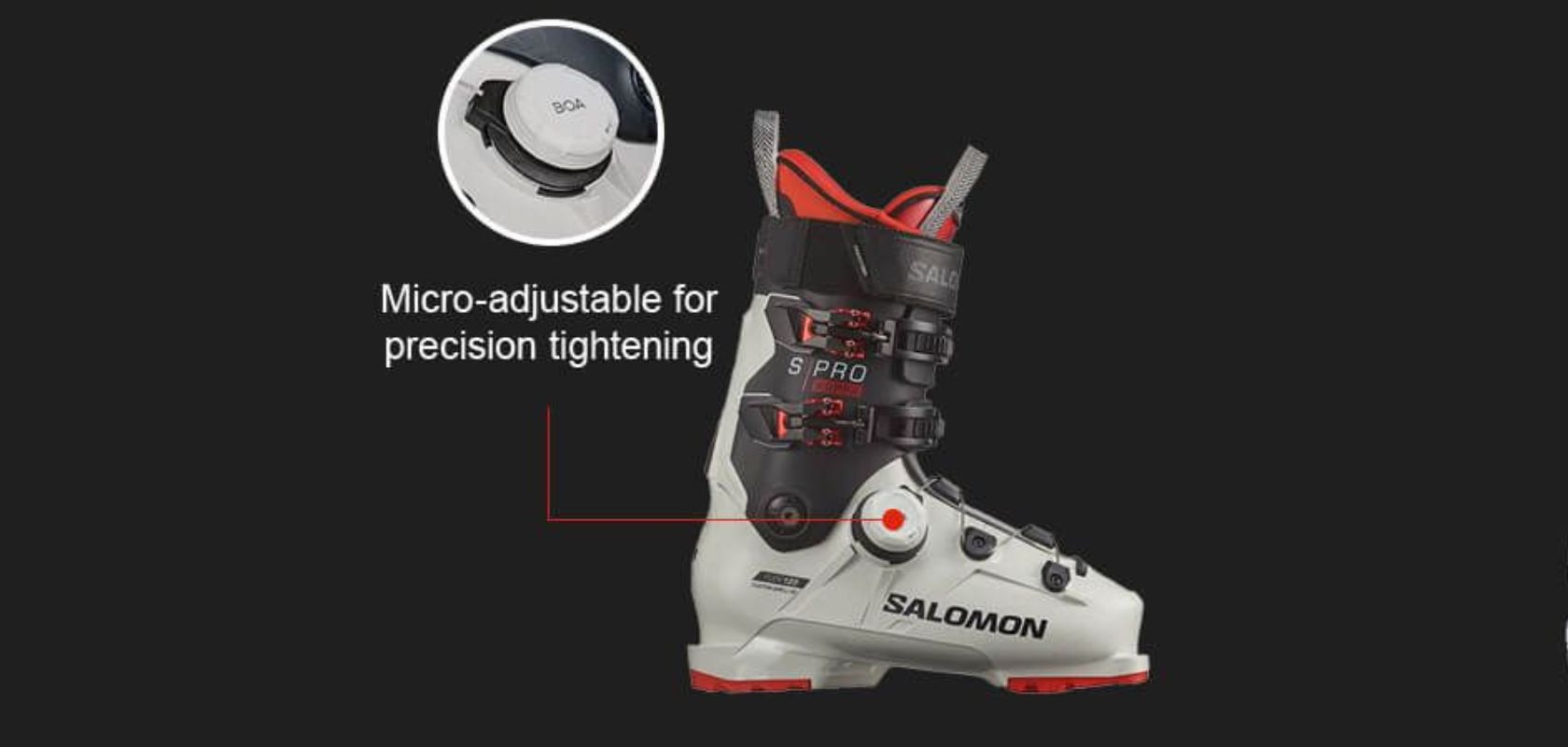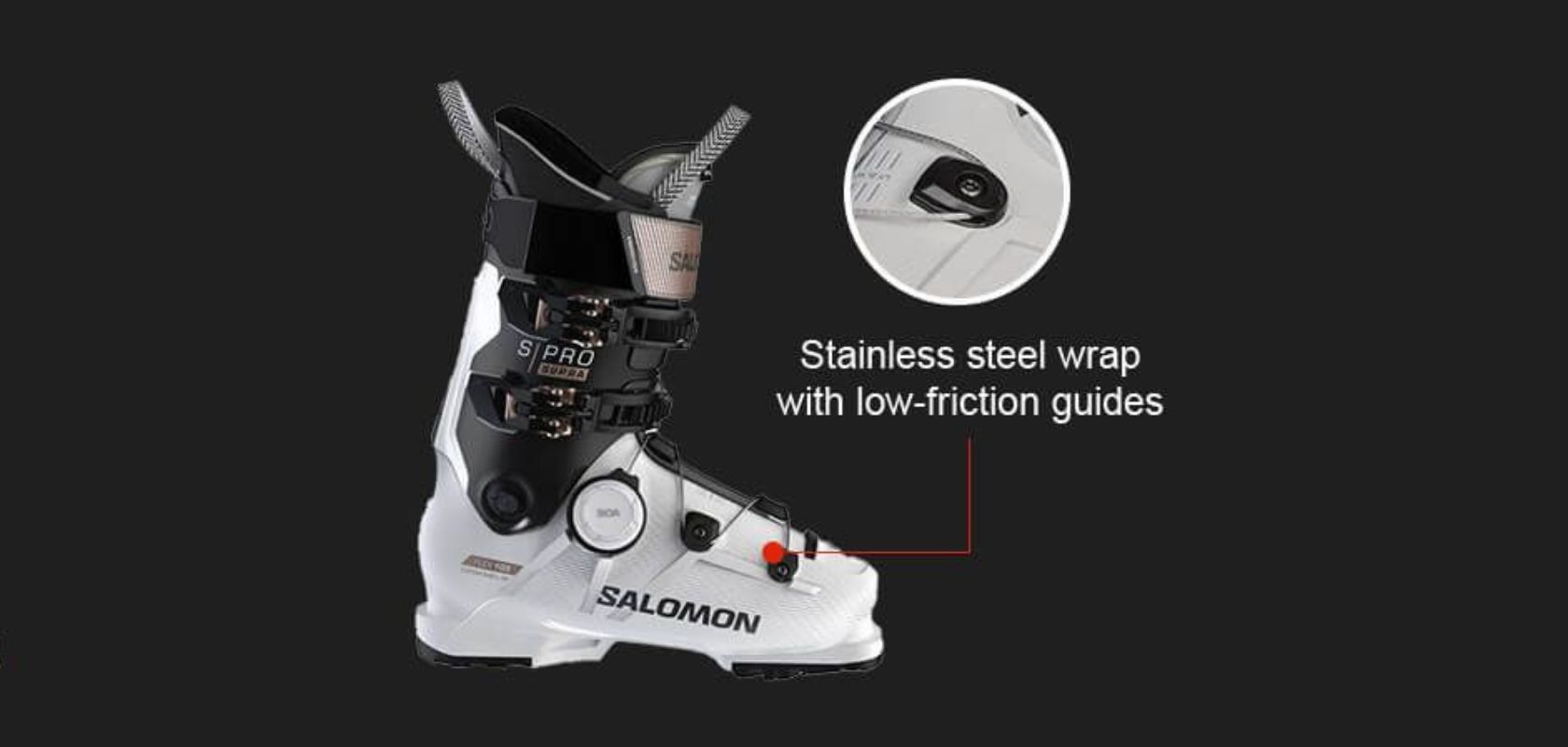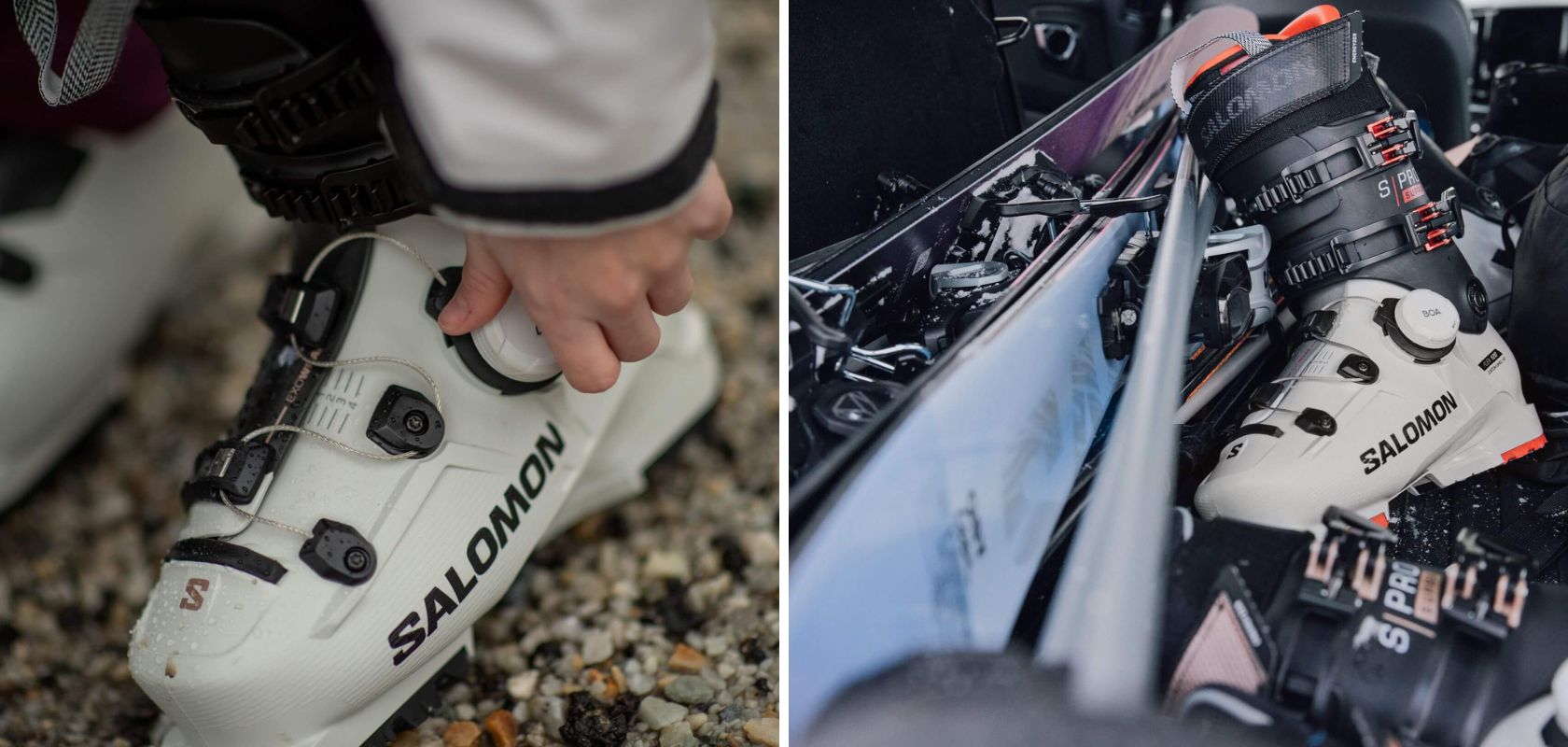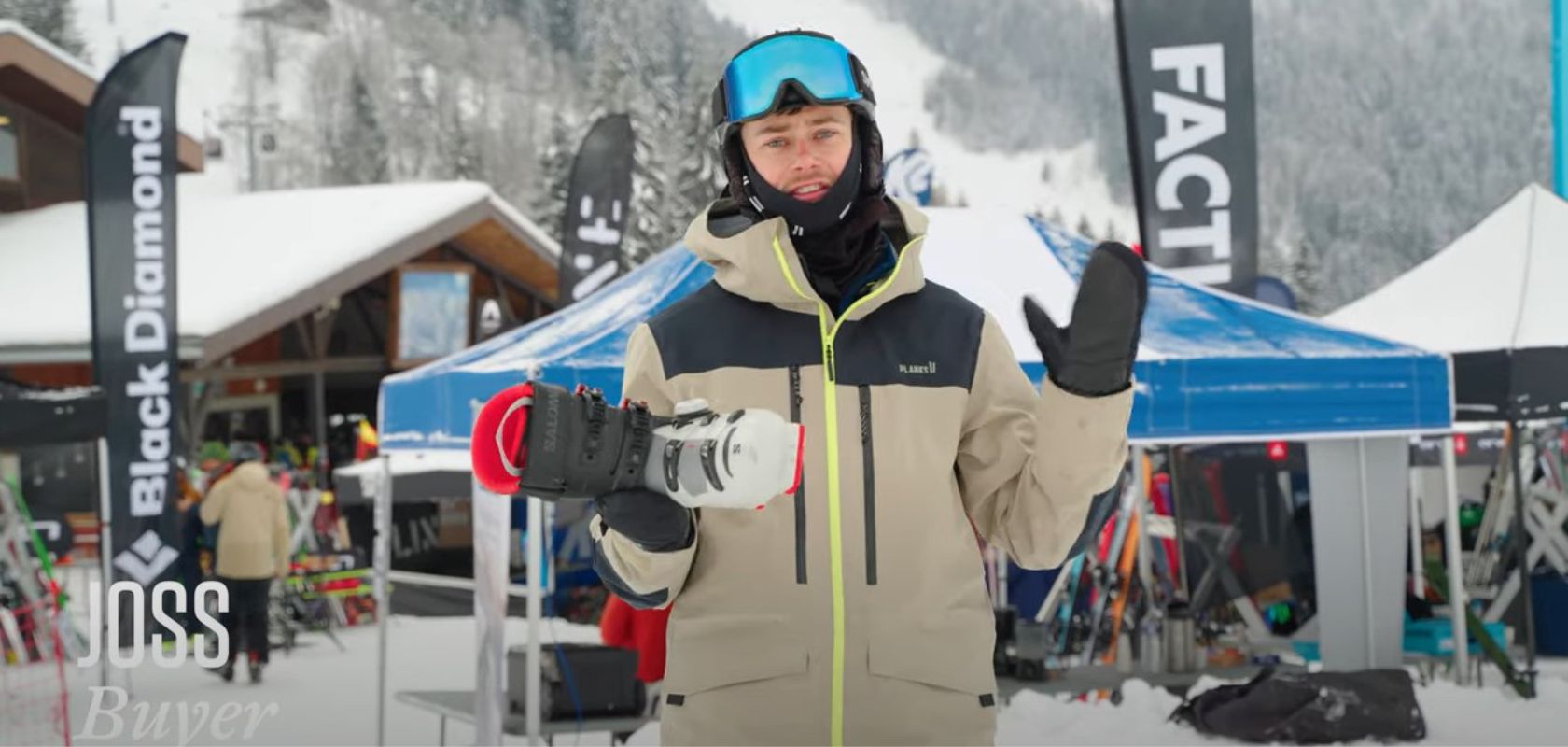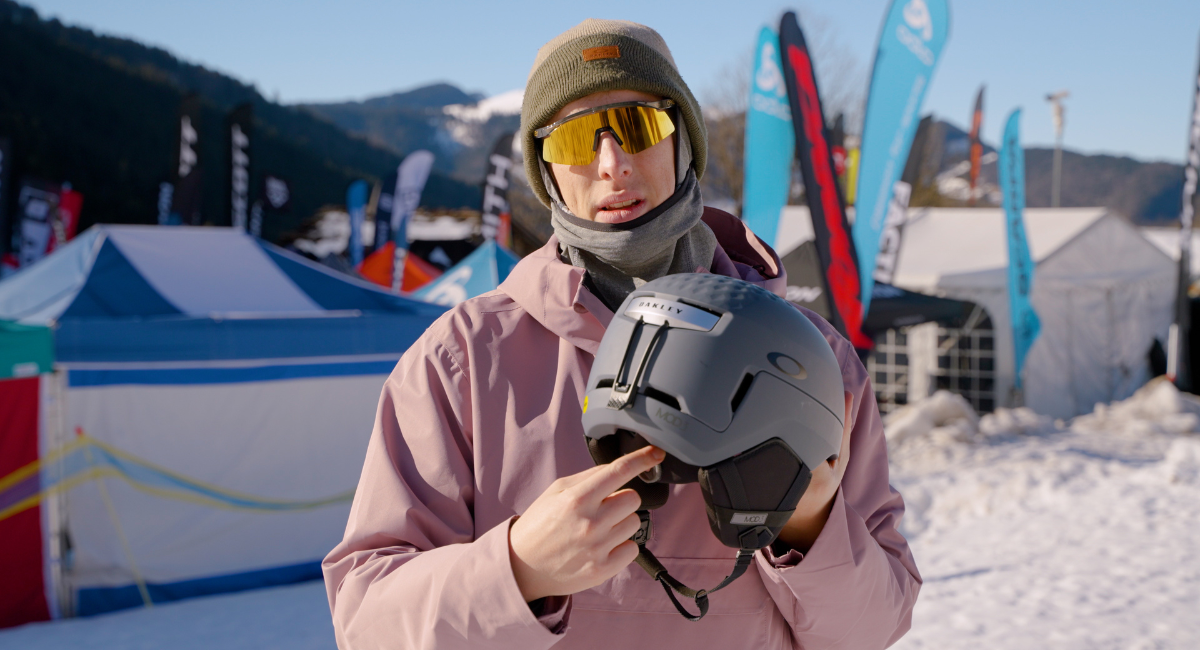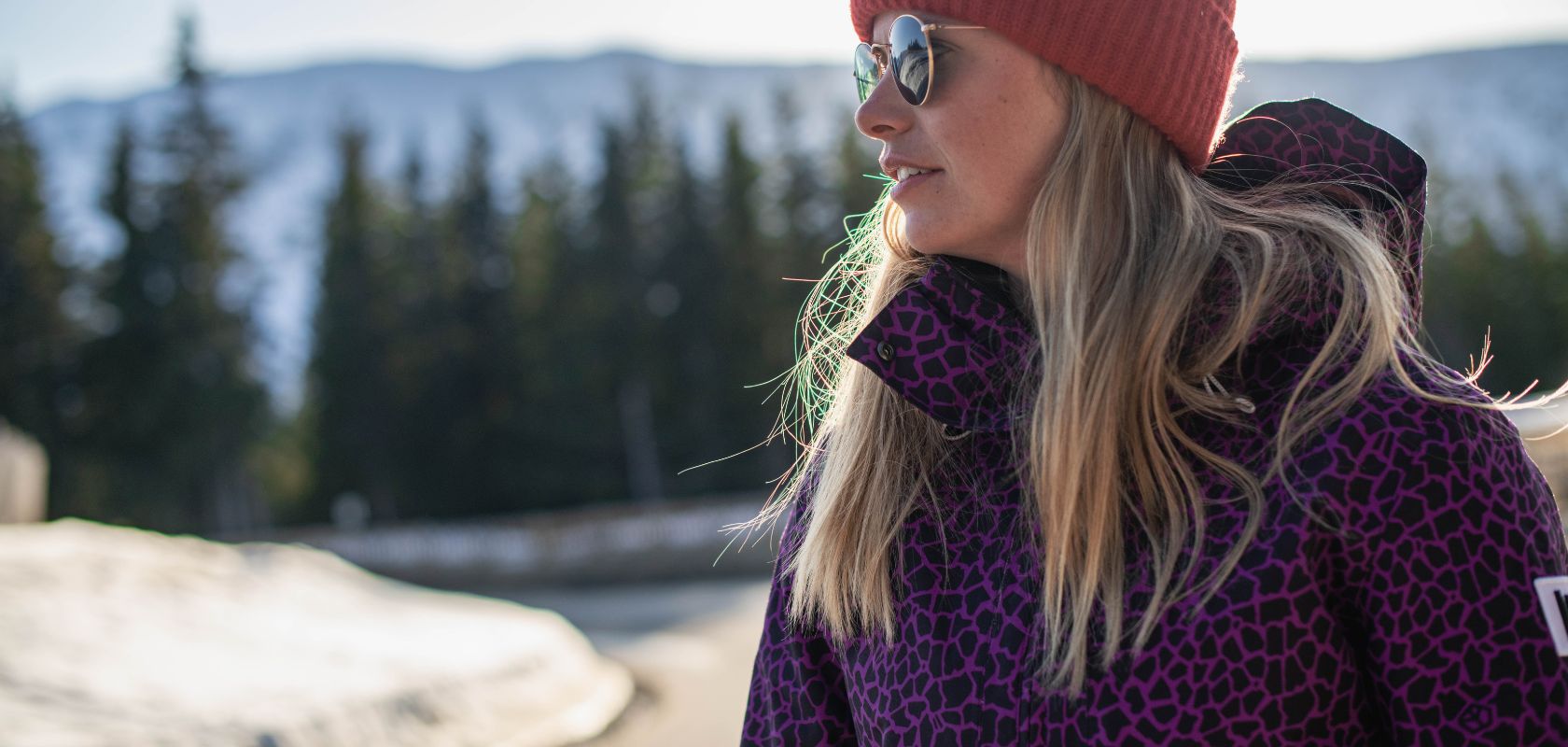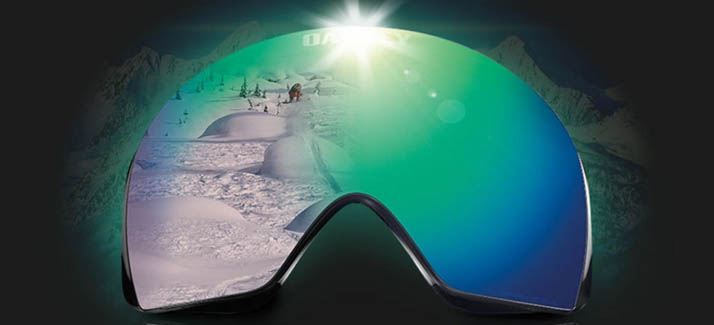Redefining Performance, One Click at a Time
If you’ve spent any time on the slopes, you know the feeling: a nagging pressure point, a boot that loosens after a few runs, and fumbling with icy buckles and frozen fingers, trying to get the tension just right. For decades, we just accepted it as part of skiing —cranking buckles for the descent, then popping them open on the lift for relief. Well, the days of compromise are over.
There’s a revolution in ski gear, all centred around a simple-looking dial you've probably seen on boots and helmets. It's the BOA® Fit System - a micro-adjustable, precision fit system that uses a dial, lace, and guides to connect you to your equipment. This isn't just a new way to tighten your gear; it's a completely new approach to achieving a high-performance fit. So, let's get into what this system is, how it works, and why you’ll want it on your next piece of ski kit.
The BOA® Fit System
Your solution to a fine-tuned boot
Salomon
Men's S/Pro Supra BOA® 120 GW
Salomon
Women's S/Pro Supra BOA® 105W GW
The Mechanics of a Perfect Fit
The BOA® Fit System works by using a dial to tighten a strong, lightweight lace through low-friction guides, creating even pressure and a secure fit. At first glance, the BOA system looks clean and simple. But underneath that sleek exterior is a seriously clever piece of engineering made of three core parts.
The Dial
The BOA® dial is the user-controlled component used to adjust the system's tension. This is the command centre of the whole operation. It’s what you interact with to fine-tune your fit. With a simple push to engage and a twist, you can make micro-adjustments to the system's tension. We’re talking millimetre-by-millimetre changes, giving you a level of precision that traditional buckles can only dream of. When you need to release the tension, you just pull the dial up, and the system releases instantly. This is a lifesaver at the end of the day or when you need to make a quick adjustment on the chairlift without even taking your gloves off. The dials themselves are built to take a beating, made from impact-resistant materials and tested to function in the harshest mountain conditions.
The Laces
Forget everything you think you know about laces. These are not your average shoelaces. The BOA laces are made from aircraft-grade stainless steel strands, bundled together and coated in a special low-friction polymer. Each lace is composed of 49 individual strands of this steel, making them incredibly strong for their weight. This strength is critical because it means the lace won’t stretch or deform under the high forces generated during skiing. The low-friction coating is just as important; it allows the lace to slide smoothly through the guides, which is the secret to achieving even pressure distribution.
The Lace Guides
The low-friction lace guides are the channels that the lace runs through, designed to distribute tension evenly across the boot or helmet. They are made from low-friction materials to work with the coated lace, ensuring that when you turn the dial, the tension is applied evenly across the entire system. There are no snags, no sticking points, and no hot spots. The placement and shape of these guides are meticulously planned for each specific product, which is why a BOA-equipped ski boot feels like it’s giving your foot a firm, uniform hug, rather than just squeezing it in a few places.
BOA in Ski Boots: The End of Buckle Tyranny
For years, the four-buckle overlap boot has been the standard for alpine performance. It’s a proven setup, but it’s not without its faults. Compared to traditional buckles, the BOA system offers a more uniform, wrapping fit rather than isolated pressure points. Let's be honest about the problems we’ve all faced.
Buckles create very specific pressure points. You tighten the top one to stop shin bang, but it bites into your leg. You crank the instep buckle for better heel hold, and suddenly you have a painful spot on top of your foot. It's a constant battle of trade-offs. Buckles also have set adjustment points. Sometimes, one position is too loose, but the very next one is way too tight. There’s no in-between. And as you ski, plastic shells can change shape and liners can pack out, meaning that a perfect morning fit can feel sloppy by lunchtime.
This is where BOA completely rewrites the script for ski boot performance.
A New Era of Precision and Power
By replacing the lower two buckles with a single BOA dial and lace path, boot manufacturers are able to create a fit that wraps around your forefoot and instep with incredible uniformity. The main benefits of the BOA Fit System in ski boots are the elimination of pressure points, superior heel lock for better energy transfer, and the ability to make on-the-fly micro-adjustments. When you turn the dial, the lace tightens and pulls the shell material from multiple directions, moulding it around the unique contours of your foot.
1. Eliminating Hot Spots
Because the force is spread out over a large area through the smooth-gliding lace system, those painful pressure points are virtually eliminated. The result is a secure hold that you can maintain all day long without needing to fiddle with your settings constantly. Better circulation also means your feet stay warmer, a welcome side effect.
2. On-the-Fly Micro-Adjustments
Because the force is spread out over a large area through the smooth-gliding lace system, those painful pressure points are virtually eliminated. The result is a secure hold that you can maintain all day long without needing to fiddle with your settings constantly. Better circulation also means your feet stay warmer, a welcome side effect.
3. Superior Heel Lock and Energy Transfer
This is arguably the most significant performance benefit. A common issue in ski boots is heel lift. If your heel isn’t locked firmly into the back of the boot, you lose a ton of power and precision. Every time your heel lifts, you’re wasting energy and delaying the signal to your ski's edge. The way a BOA system wraps over the instep is exceptionally effective at pushing your heel down and back into the heel pocket. With your foot securely locked in place, every movement you make is transferred directly and immediately to the ski. Your turns become more responsive, your edge hold is more confident, and you feel more connected to the snow than ever before.
Zonal Fitting for a Custom Feel
Top-tier boots are now appearing with dual-BOA systems. This typically means one dial controls the fit over the lower foot and instep, while a second dial manages the cuff and lower leg. This is the ultimate in fit customisation. Do you have a narrow forefoot but a muscular calf? No problem. You can crank down the lower zone for a super-snug fit while keeping the upper cuff slightly looser for mobility. This zonal approach allows you to solve complex fit issues that would be impossible to fix with buckles alone, giving you a truly personalised setup straight out of the box. Boot fitters at Snow+Rock can use these systems to achieve an amazing fit for a wide variety of foot shapes.
Beyond the Boot: Securing Your Most Important Gear
The influence of the BOA Fit System extends well beyond footwear. Its combination of security, low weight, and ease of use makes it a perfect solution for other pieces of critical ski equipment, most notably helmets.
Dialling In Helmet Safety and Fit
A helmet only works if it fits correctly. A helmet that is too loose can shift during a fall, exposing parts of your head. A helmet that is too tight creates pressure points and headaches, making you not want to wear it at all.
The BOA 360° Fit System in a helmet uses a dial to tighten a full halo, providing a secure and even fit around the entire head. Instead of a simple strap at the back that just pushes the helmet forward on your head, this system uses the classic dial-and-lace setup to tighten a full liner band that encircles your head.
When you turn the dial at the back of the helmet, it shortens a thin cable that runs all the way around the inside liner. This gently and evenly cinches the entire fit system around your skull—front, back, and sides. The result is a perfectly snug, secure fit with zero pressure points. It feels less like something sitting on top of your head and more like a part of you.
This system is also brilliant for managing your layering. On a cold morning, you might wear a thin beanie under your helmet. As the day gets warmer, you can take it off. With a BOA-equipped helmet, a few quick clicks are all it takes to readjust the fit perfectly. It also helps create a seamless integration with your goggles, holding the helmet in the correct position to eliminate that dreaded gap between the helmet brim and goggle frame.
BOA on the Backcountry Ascent
In the world of ski touring and mountaineering, quick transitions and gear efficiency are everything. Backcountry-specific ski boots often use BOA systems because they allow for rapid changes between uphill and downhill modes. On the skin track, you can pull the dial to completely release the tension over your instep, allowing for maximum ankle articulation and a more natural walking motion. When you get to the top and it’s time to ski down, you just push the dial in and crank it down in seconds to get that locked-in, high-performance fit you need for the descent. It's faster, easier, and more precise than wrestling with buckles in a windy col.
BOA doesn't just claim their system improves performance; they've invested heavily in scientific research to prove it. At their state-of-the-art Performance Fit Lab, they use advanced biomechanical testing to measure exactly how a better fit translates to better athletic output.
What are the proven performance benefits of the BOA Fit System?
Peer-reviewed studies have shown that the wrapping effect and secure heel lock provided by the BOA Fit System lead to measurable gains in performance :
- Increased Agility and Speed → Athletes have seen up to a 9% improvement in agility and speed, allowing for more efficient changes of direction.
- Improved Power and Endurance → The system can improve power output by up to 11% during sprints while increasing overall efficiency, meaning you can go faster with the same level of exertion.
- Enhanced Stability → By improving heel hold and connection to the midsole by up to 3%, the system increases ankle stability and control, giving you more confidence on the mountain.
Is the BOA Fit System durable?
Yes, the BOA Fit System is built to be extremely durable and withstand the harsh conditions of skiing and snowboarding.
- Impact-Resistant Materials → The dials and components are made from robust materials designed to resist impacts and function in snow and ice.
- The BOA Lifetime Guarantee → The dials and laces on every product are guaranteed for the lifetime of that product. If you ever have an issue, BOA provides a free repair kit to get your gear back in action.
Living with Your BOA Gear: A Quick Guide
One of the best things about the BOA system is its simplicity and low maintenance. However, a little knowledge goes a long way in keeping it functioning perfectly for years to come.
- Operation → It’s as easy as one, two, three. 1. Push the dial to engage the system. 2. Turn the dial clockwise to tighten. 3. Pull the dial up to instantly release the tension. For dials that loosen incrementally, you'll turn them anticlockwise.
- Cleaning → If your system gets clogged with dirt or grime, a little bit of running water and a light scrub with a small brush is all it takes. Let it air dry, and it will be good as new.
- Repairs → In the unlikely event that a lace snaps or a dial is damaged, repair is surprisingly simple. The free repair kits from BOA come with clear instructions, and you can swap out a lace or a dial in a matter of minutes with just a few basic tools.
By delivering a more uniform, secure, and micro-adjustable fit, BOA is making skiing more responsive and more enjoyable for everyone. It reduces pain points, increases control, and gives you the confidence to push your limits. So, the next time you're looking for new boots or a new helmet at Snow+Rock, look for the dial!
FAQs
The BOA® Fit System is a patented gear technology that replaces traditional laces or buckles. It consists of three parts: a micro-adjustable dial, super-strong, lightweight laces, and low-friction lace guides. It is made to deliver a precise, custom fit.
Using the system is simple:
- Push the dial to engage it.
- Turn the dial clockwise to tighten for a snugger fit.
- Pull the dial up to instantly release the tension for a quick exit. On some newer systems, you can also turn the dial anticlockwise for micro-loosening.
The main advantage of the BOA system over buckles is its ability to provide a uniform, wrapping fit that eliminates the isolated pressure points common with buckles. This even pressure distribution improves circulation and hold, particularly over the instep.
BOA laces are incredibly durable. They are made from aircraft-grade stainless steel and have a breaking strength of over 550 lbs. While breaking is rare under normal use, if it does happen, the system is covered by a lifetime guarantee.
No, the BOA Fit System is not an aftermarket product. It is integrated into products during the manufacturing process by partner brands, so it cannot be added to gear that wasn't designed for it.
In helmets, the BOA 360° Fit System uses the dial to tighten a full halo that encircles the head. This provides a secure, 360-degree wrap that eliminates pressure points and ensures the helmet doesn't shift, which is critical for safety.
Yes. While the BOA system provides outstanding micro-adjustability, a professional boot fitter is still essential to ensure the shell shape and size are correct for your foot anatomy. The BOA system perfects the fit, but it can't change the fundamental shape of the boot.
Many skiers find that the BOA system is particularly effective for those with high insteps or other fit challenges. Because it wraps the shell material instead of just clamping down, it can accommodate different foot shapes more effectively and reduce pressure on the top of the foot.
Yes. The latest generation of the BOA dial, the H+i1 platform, allows for two-way, incremental adjustments. This means you can turn it clockwise to tighten and anticlockwise to loosen, click by click, without having to release the whole system.
The system itself is built to withstand wet and icy conditions. The closed design of the dial and the stainless steel cables are highly resistant to water and ice, ensuring they function correctly even on the snowiest days.
No, the system is designed to be extremely lightweight. The materials, from the polymer dial to the steel laces, are chosen for a high strength-to-weight ratio, making them ideal for performance gear where every gram matters.
Most repairs, like replacing a lace or a dial, are designed to be simple and can be done at home with the free repair kit provided by BOA. The kits come with a special tool and clear instructions.
The primary performance benefit is improved power transfer and control. By providing a superior, locked-in heel hold, the system ensures that energy is transferred more efficiently from your foot to the ski's edge, resulting in quicker, more responsive turns.
Related Articles

Let us know you agree to cookies
We use marketing, analytical and functional cookies as well as similar technologies to give you the best experience. Third parties, including social media platforms, often place tracking cookies on our site to show you personalised adverts outside of our website.
We store your cookie preferences for two years and you can edit your preferences via ‘manage cookies’ or through the cookie policy at the bottom of every page. For more information, please see our cookie policy.

